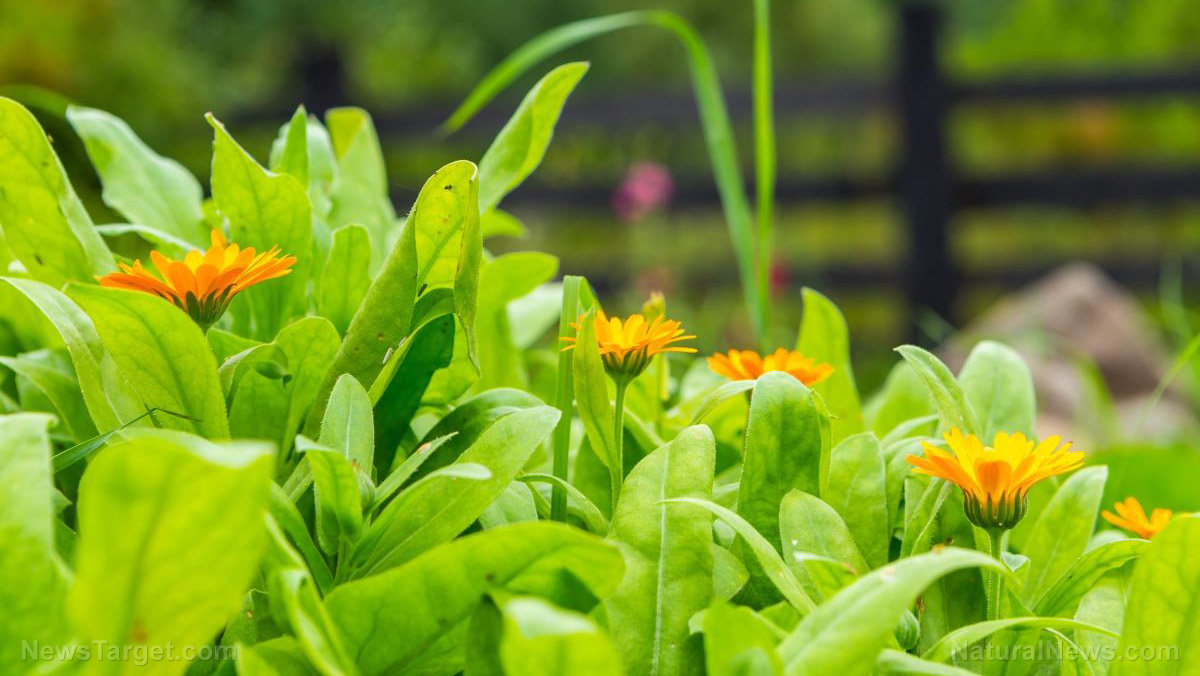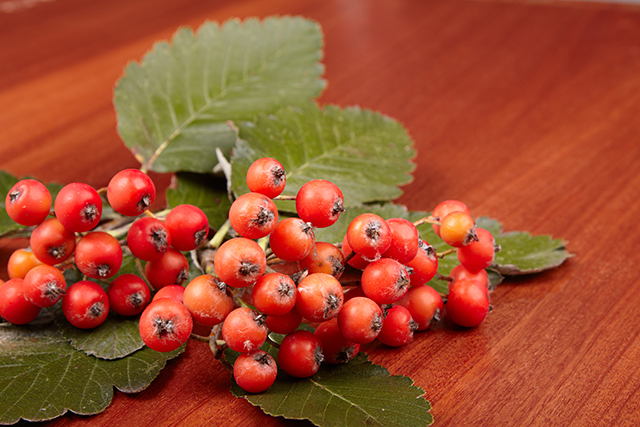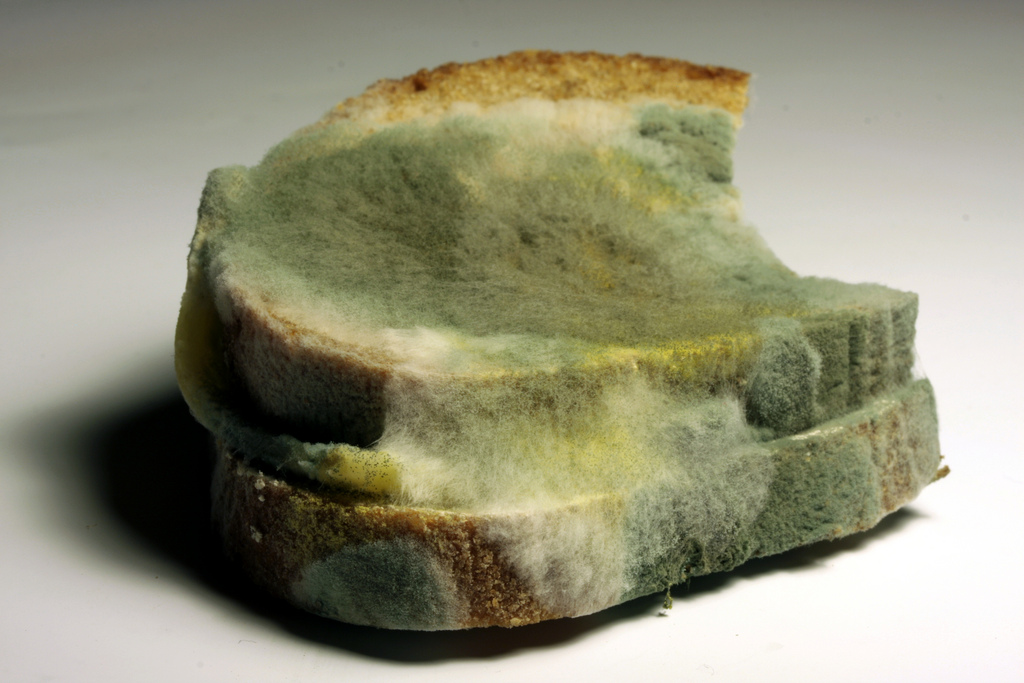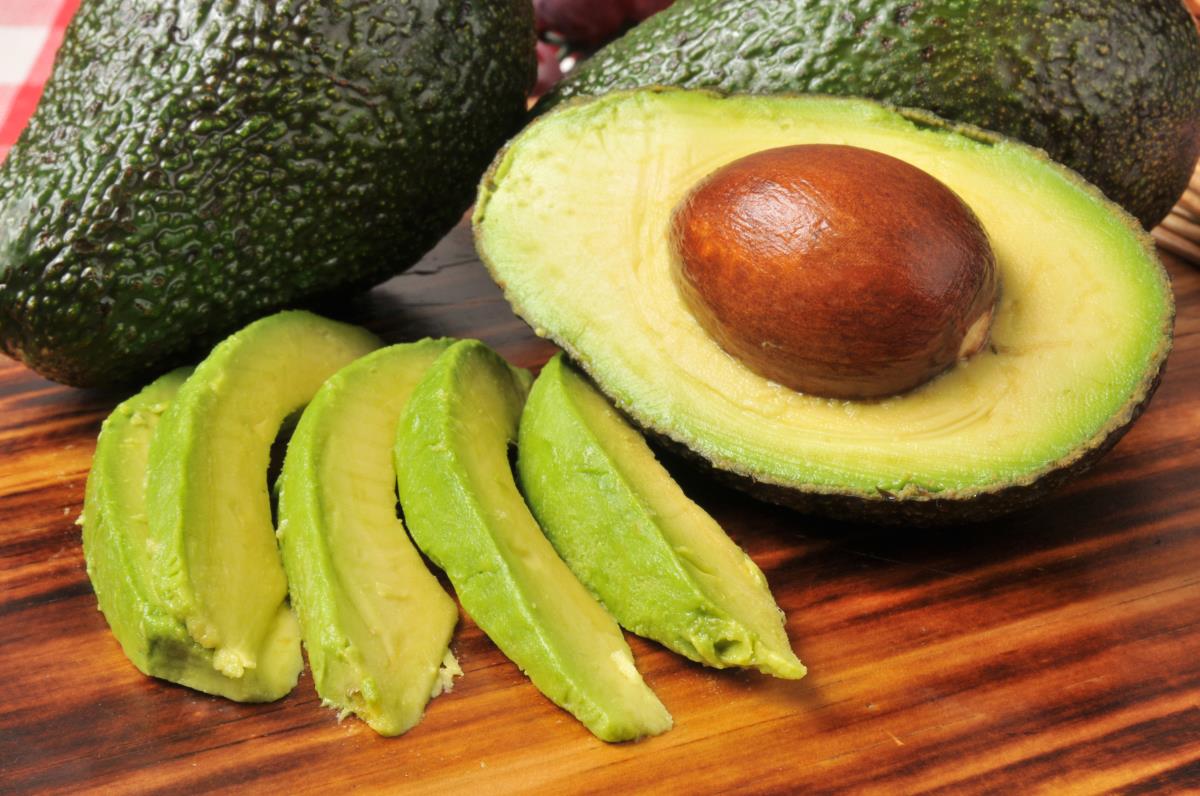Calendula: A versatile healing herb to grow in your garden
06/11/2025 / By Ava Grace

- Calendula, also known as pot marigold, has been used as medicine since ancient times because of its anti-inflammatory, antimicrobial and natural healing properties. It is a natural remedy for skin and digestive issues as well as a natural dye.
- Calendula is rich in bioactive compounds like flavonoids and carotenoids, offering anti-inflammatory, antimicrobial and antioxidant benefits.
- Calendula is available in various forms, including teas, topical creams and tinctures. Its petals are edible and often used to add color and flavor to foods, earning it the nickname “poor man’s saffron.”
- Calendula petals are used in recipes like golden rice, infused honey, salads and baked goods. It was once used to induce prophetic dreams and symbolized grief in Victorian England.
- Calendula is celebrated for its practical and healing qualities, making it a valuable addition to modern wellness routines.
Calendula (Calendula officinalis), often referred to as pot marigold, is a radiant herbaceous plant that has been cherished for centuries for its medicinal and culinary properties. With its vibrant golden-orange petals and daisy-like appearance, calendula is more than just a pretty flower — it’s a powerhouse of healing compounds that have been used to treat a variety of ailments, from skin irritations to digestive issues.
Brief history of calendula
Calendula has a rich history that dates back to early civilizations. The ancient Romans and Greeks used calendula petals to adorn their temples and as a natural dye for fabrics, cosmetics and food. In Traditional Ayurvedic and Chinese Medicine, calendula is prized for its anti-inflammatory and antimicrobial properties.
During the Middle Ages, calendula was a staple in European gardens, where it was used to treat wounds, soothe digestive complaints and ward off the plague. The name “calendula” is derived from the Latin word calendae, meaning “little calendar,” as the plant was believed to bloom on the first day of every month. (Related: Calendula can reduce inflammation, heal the skin and help protect the heart.)
In folklore, calendula was believed to have magical properties. It was thought that placing calendula petals under one’s pillow could induce prophetic dreams, while carrying the flowers in a sachet was said to bring good fortune. In Victorian England, calendula symbolized grief and remembrance and was often used in funeral wreaths. Today, it is celebrated for its practical and healing qualities, making it a beloved herb in both traditional and modern medicine.
Medicinal uses of calendula
Calendula is a versatile herb that has been extensively studied for its therapeutic benefits. Its bright petals contain a wealth of bioactive compounds, including flavonoids, carotenoids and triterpenoids, which contribute to its anti-inflammatory, antimicrobial and antioxidant properties.
Here are some of calendula’s reported health benefits:
- Skin healing – Calendula is perhaps best known for its ability to promote skin healing. Its anti-inflammatory and antimicrobial properties make it an effective treatment for cuts, burns, eczema and acne. Calendula-infused creams, ointments and oils are commonly used to soothe irritated skin and accelerate wound healing.
- Digestive remedy – Calendula tea is traditionally used to alleviate digestive issues such as gastritis, ulcers and indigestion. Its anti-inflammatory properties can help calm the lining of the stomach and intestines, while its mild bitter taste stimulates digestion.
- Immunity boost – The antioxidants in calendula help strengthen the immune system, making it a valuable ally during cold and flu season. Calendula tea or tinctures can be consumed to support overall immune health.
- Menstrual relief – Calendula has been used to ease menstrual cramps and regulate menstrual cycles. Its antispasmodic properties help relax the uterine muscles, reducing discomfort.
- Oral health – Calendula mouthwash or gargles can help treat mouth ulcers, sore throats and gum inflammation due to its antimicrobial and healing properties.
How to use calendula
Calendula can be used in a variety of forms, depending on the desired effect. Here are some common ways to incorporate this healing herb into your routine:
- Tea – Steep dried calendula petals in hot water for 10-15 minutes to make a soothing tea. This can be consumed to support digestion, boost immunity or simply enjoy the herb’s mild, slightly bitter flavor.
- Topical applications – Calendula-infused oils, creams and salves are excellent for treating skin conditions. Simply apply the product to the affected area as needed.
- Tinctures – Calendula tinctures, made by soaking the petals in alcohol or glycerin, can be taken orally or applied topically for concentrated healing benefits.
- Culinary uses – Calendula petals are edible and can be used to add color and flavor to salads, soups and baked goods. They are often referred to as “poor man’s saffron” due to their vibrant hue.
Calendula flowers are a feast for the eyes. Their petals range in color from sunny yellow to deep orange, often with a gradient that adds depth and dimension. The flowers are typically 2-3 inches in diameter, with a slightly peppery, earthy flavor that complements both sweet and savory dishes. The petals are delicate and can be easily plucked for use in recipes or herbal preparations.
Recipe ideas featuring calendula
Calendula’s versatility extends to the kitchen, where its petals can be used to enhance the flavor and appearance of dishes. Here are a few recipe ideas:
- Golden calendula rice – Add a handful of calendula petals to your rice while cooking for a vibrant, saffron-like dish.
- Calendula-infused honey – Steep dried calendula petals in warm honey for a soothing, immune-boosting sweetener.
- Calendula and citrus salad – Toss fresh calendula petals with mixed greens, orange segments and a light vinaigrette for a refreshing salad.
- Calendula shortbread cookies – Incorporate finely chopped petals into your favorite shortbread recipe for a unique, floral twist.
- Calendula healing salve – Combine calendula-infused oil with beeswax to create a nourishing salve for dry or irritated skin.
Calendula is a true gem of the herbal world, offering a wealth of benefits for both health and culinary endeavors. Its vibrant petals, rich history and versatile applications make it a must-have in any wellness toolkit.
Whether you’re sipping calendula tea to soothe your stomach, applying a calendula salve to heal your skin or sprinkling petals on your salad for a burst of color, this golden flower is sure to brighten your day and your health.
This story is not medical advice and is not intended to treat or cure any disease. Always consult with a qualified naturopathic physician for personalized advice about your specific health situation or concern.
Visit NaturalNews.com, a great article source where you can learn about superfoods and herbs and their health benefits.
You can also try Brighteon.ai, an AI model created by Mike Adams, also known as the Health Ranger. This model is available as a free download to be run locally and is designed to help share and decentralize knowledge. By doing so, it aims to bypass censorship and empower people with knowledge.
If you’re looking for an uncensored video free speech website where you can openly discuss nutrition, natural medicine, ingredients and more, check out Brighteon.com and our two free speech social media sites, Brighteon.IO and Brighteon.social.
Watch this video to learn why calendula is a must-have herb in your medicine cabinet.
This video is from the HealthPetal channel on Brighteon.com.
More related stories:
Calendula can reduce inflammation, heal the skin and help protect the heart.
Treat skin disorders and stomach ulcers with calendula.
Get Healthy, Supple Lips With Eco-Lips Lip Balm.
7 Herbs for wound care every prepper should know about.
10 Medicinal plants you should have in your home garden.
Sources include:
Submit a correction >>
Tagged Under:
alternative medicine, Calendula, healing, health science, herbal medicine, Herbs, natural cures, natural health, natural medicine, Naturopathy, organics, phytonutrients, plant medicine, remedies
This article may contain statements that reflect the opinion of the author





















